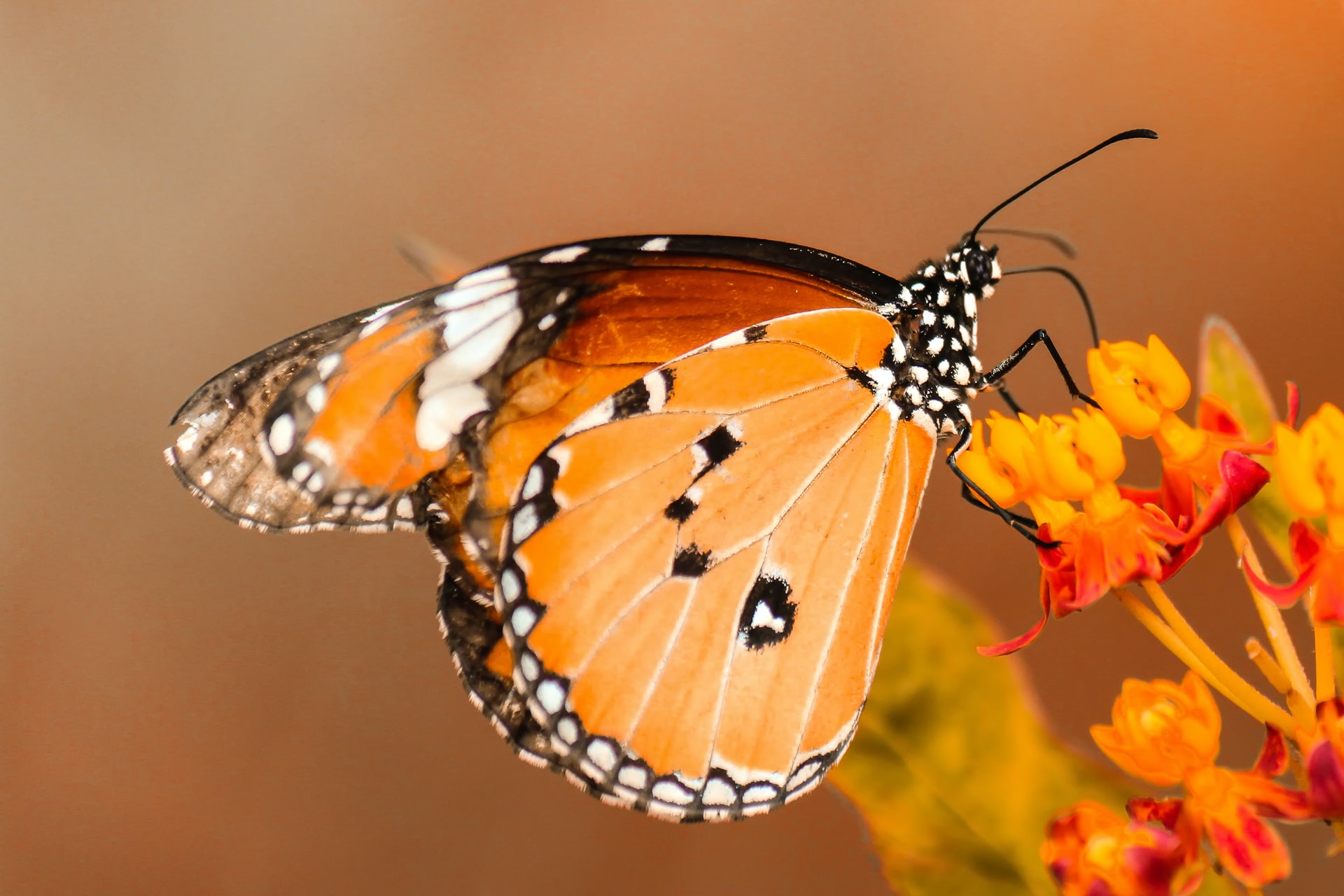Top 9 Mind Boggling Facts About Butterflies That You Never Knew in Your Whole Life

1. Butterflies adore high temperatures.
Though we humans may think it’s too hot, the butterflies adore it and even need it. We humans don’t leave our home if there is a sun over there showering with hot flakes. Sleeping and doing leisure activities is our favorite thing to do while the sun does its job.

In fact, according to, lewisginter.org, butterflies can’t even fly if their body temperature is less than 86 degrees Fahrenheit. Butterflies are cold blooded (ectothermic) and have no means for regulating their body temperatures. Rather, they must rely on their physical abilities to heat their bodies in order to fly, also known as thermoregulation.
2. Butterfly transformation takes place in four major stages, egg, caterpillar, pupa and adult.
Did you know, what are the four stages of a caterpillar? Egg, caterpillar, pupa, and adult are all three main stages of the butterfly transformation. Butterflies, moths, beetles, flies, and bees have complete metamorphosis.

According to, ansp.org, there are four stages in the metamorphosis of butterflies and moths: egg, larva, pupa, and adult. Eggs are laid on plants by the adult female butterfly. The next stage is the larva. This is also called a caterpillar if the insect is a butterfly. When the caterpillar is full grown and stops eating, it becomes a pupa.
3. Butterflies don’t eat during the pupa stage.
The pupa is the stage in a butterfly’s life when it is encased in a chrysalis and undergoing metamorphosis. It does not eat during this stage. According to, enchantedlearning.com, the pupa stage lasts from a few days to many months.

It’s the life stage of some insects undergoing transformation between immature and mature stages. Insects that go through a pupal phase are holometabolic: they go through four distinct phases of their life cycle.
4. Hard-ridged outer layer of shell protects butterfly eggs from external harm.
The hard-ridged substance on the outer layer of the butterfly egg shell is called chorion. Butterflies lay hundreds of eggs on plants, only few of them survive. The chorion is lined with a thin coating of wax which prevents the egg from drying out before the larva has had time to fully develop.

Butterfly eggs vary greatly in size and shape among species. According to, museumsvictoria.com.au, the female butterfly lays an egg and the larva or caterpillar hatches out of the egg within two to three days. The newly hatched caterpillar eats its own egg and then eats leaves to get energy to grow.
5. The adult female butterflies lay their eggs on plants.
The adult female butterflies lay their eggs on plants. Later, the plants the eggs laid become food to the hatching caterpillars. The caterpillar grows and moults many times, and after about three to four weeks it begins to pupate.

Food and home problems can be solved with one action. It is one of the most interesting examples of how nature thinks in 360 degrees without actually attending the university courses. In nature everything is perfectly balanced without any last minute planning and management.
6. Butterfly life expectancies are short.
The lifespan of butterflies is very short. So the next curiosity is, how long do butterflies live? As compared to human beings they live a very short life, but, from insects perspective it is much longer. Butterflies tend to have relatively short lifespans.

Most adult butterflies live only one or two weeks, but some species hibernate during the winter and may live several months. Unfortunately, butterflies do not have very good lifespans. In fact, the longest-lived adult butterfly has a lifespan of only one year.

According to, fantasticpestcontrol.co.uk, the mayfly spends two years as larvae underwater but lives for only one day in their adult stage. It’s one of the insects with the shortest life spans.
7. Do butterflies sleep?
According to, American Museum of Natural History, at night, or when the day is cloudy, adult butterflies rest by hanging upside down from leaves or twigs, where they are hidden among the foliage. Butterflies don’t actually sleep.

Instead they rest, or become quiescent, at night or during the day when it’s cloudy or cool. They rest with eyes open, typically hidden amid the foliage and hanging upside down from leaves or twigs in trees and shrubs. Source
8. What do butterflies eat?
According to, Nature Museum, because of their straw-like mouthparts, butterflies are mainly restricted to a liquid diet. Butterflies use their proboscis to drink sweet nectar from flowers. Nectar sometimes resides deep within a flower and the proboscis allows the butterfly to reach this sugary treat.
Some butterflies also like fruit, especially fruit that has been fully ripened and rotting. The butterflies are limited to liquid diets because of their straw-like mouths called a proboscis.

They drink nectar from the flowers, because it’s a quick source of energy which the butterflies need for flying and reproduction. The caterpillar eats and grows until it reaches its highest point and then sheds its outer skin to reveal a hard-inner skin that looks like a hard shell.
9. Do butterflies drink water?
According to, nwf.org, Monarchs and other butterflies need moisture but cannot land on water to drink, so a typical garden pond, fountain or birdbath won’t help them. Instead, butterflies sip liquid from muddy soil. This behavior is known as “puddling” and not only provides moisture but also salts and other dissolved minerals that the butterflies need.

According to, Nature Museum, Butterflies have a long tongue, called a proboscis, which they can curl and uncurl to drink through like a straw. Because of their straw-like mouthparts, butterflies are mainly restricted to a liquid diet. Butterflies use their proboscis to drink sweet nectar from flowers.





